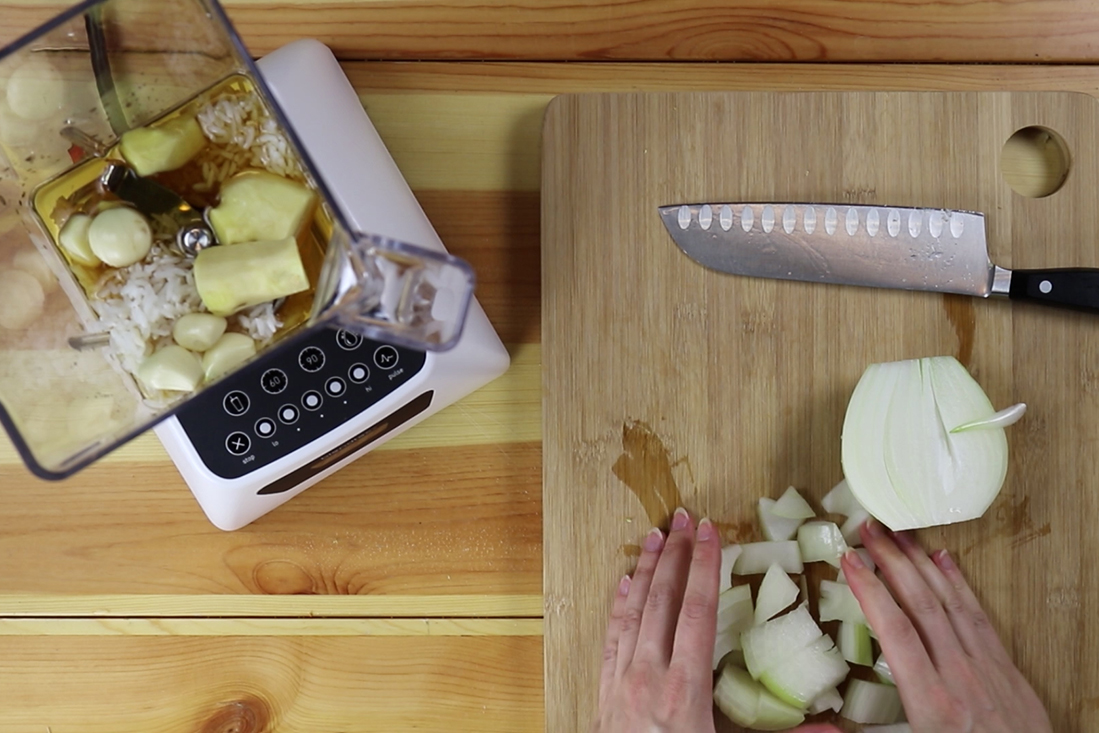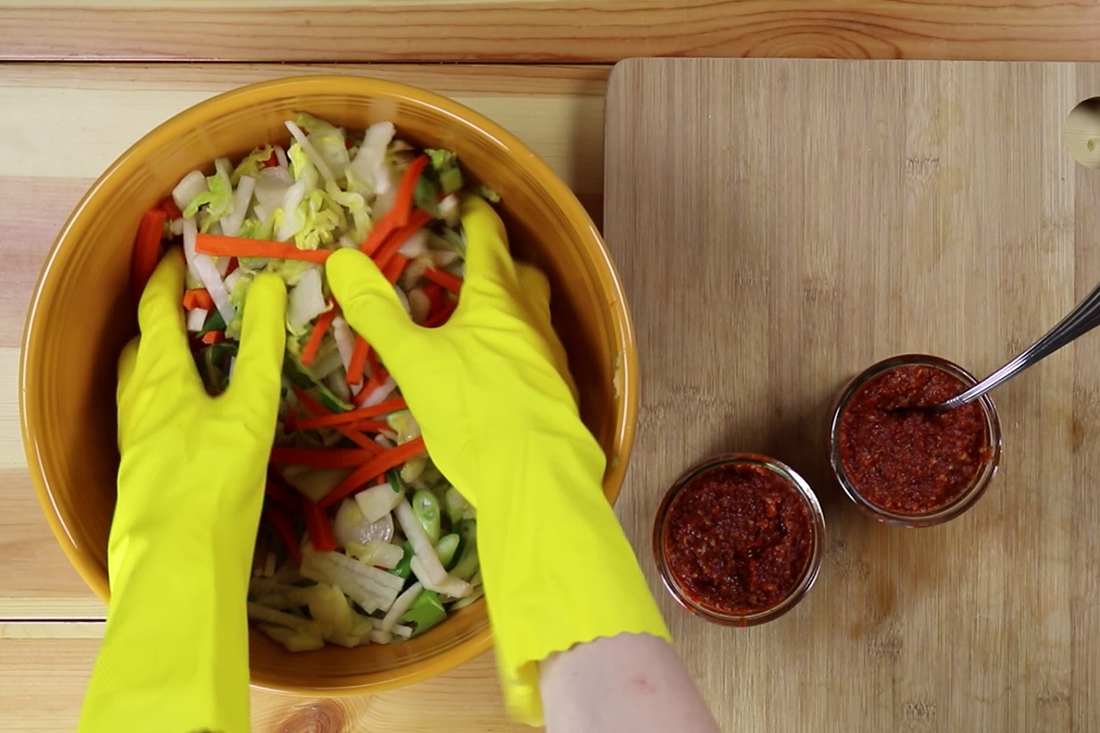Ingredients
1 large head Napa cabbage
1 daikon radish
½ cup kosher salt
5 – 6 garlic cloves, chopped
1 onion, chopped
ginger knob, 2″ long
2 teaspoon sugar
¼ cup fish sauce
½ cup gochugaru
¼ cup water
¼ cup cooked white rice
1 carrot
2 stalks green onion
Equipment
bowls
assorted measuring spoons and cups
rubber gloves
blender or food processor
Crunchy, spicy and good on just about anything, there’s a reason why Korea’s national dish has taken the world by storm, and if you haven’t fallen in love with it yet, it’s time to find out what everyone’s talking about. Kimchi is a cousin to sauerkraut, though unlike its simpler relative, kimchi brings in spice and flavor through gochugaru, fish sauce (optional) and root vegetables. This makes it great for culinary mashups, ending up in soups, pasta dishes or cold sandwiches.
Kimchi is a fantastic way to get into fermenting foods because it requires no additional equipment, and the ingredients are inexpensive and easy to find at your local grocery store. Once you’ve made it the first time, kimchi can be personalized to individual tastes. We are sharing our recipe, and hope you enjoy it!
Step One. Chop the cabbage
Quarter the Napa cabbage and give the bottom layers another cut to avoid any large pieces. Continue chopping the cabbage. Wash and drain the chopped cabbage.
Step Two. Salt the cabbage layers
Add a layer of cabbage to the bottom of a large bowl. Sprinkle a generous amount of kosher salt and repeat process until you are out of cabbage and salt. Once you are done, let the cabbage rest for an hour while the salt draws out moisture from the cabbage. Rinse out the salt three times and set aside.
Step Three. Create the flavor base
Peel the garlic cloves and add to a blender or food processor along with the chopped onion, peeled ginger, sugar, fish sauce, gochugaru, water and cooked white rice. Blend into a thick paste.
Step Four. Chop vegetables
Peel and julienne the carrots and daikon radish. Chop the green onions on a bias.
Step Five. Mix the vegetables
Add vegetables to the wilted cabbage and toss thoroughly.
Step Six. Add in the spice and flavor
Pour the flavor base over the vegetables and mix well by hand. Gloves are recommended, as the gochugaru can irritate the skin.
Step Seven. Ferment in the jar
Place the kimchi into clean, air-tight containers in a cool, dark location. Let sit for 3-7 days, opening 1-3x per day to “burp” the kimchi. Trust us on this- leave head space to avoid liquid splatter while venting. (Alternatively, you can use a mason jar outfitted with a fermentation lid such as the Pickle Pipe to eliminate the need to vent daily). The warmer the room temperature, the more vigorous the fermentation.
Prepare to have your life changed
Now that your kimchi is ready, what aren’t you going to make with it? It’s great on Korean dishes, of course, but kimchi is built for fusion cuisine. Mix it into a vegetable or chicken soup for an upgrade of flavor. Add it to quesadillas or grilled cheese sandwiches, garnish a Bloody Mary, or fill an omelette.
Be creative. Trust your culinary instincts and enjoy!









